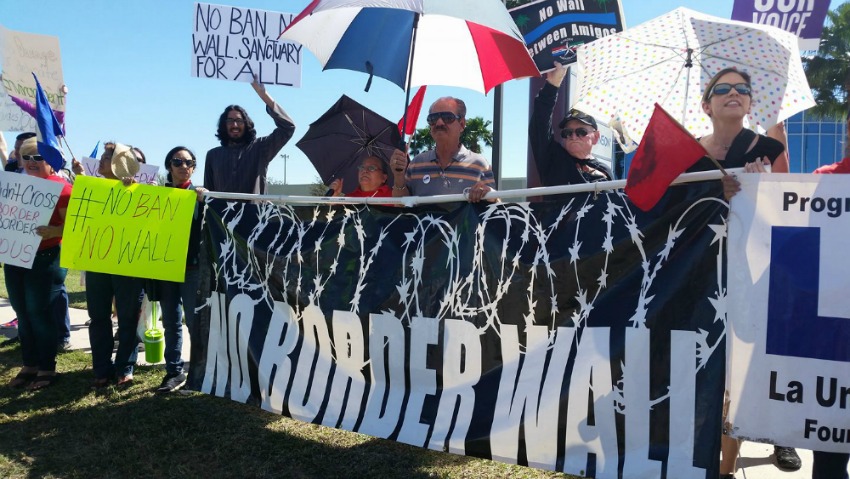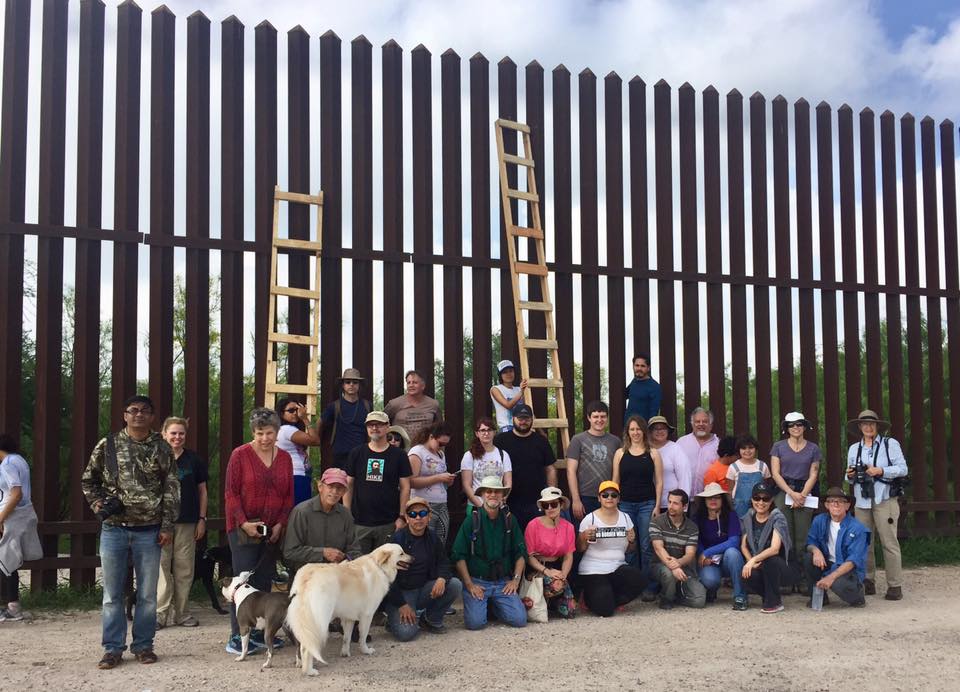By: Bekah Hinojosa

Update: The original version of this blog listed the comment period deadline as Monday, Sept. 25th, which was the original deadline. The date has since been updated to Oct. 20th to reflect the extension of the comment period for the proposed 60 miles of border wall in Hidalgo and Starr Counties.
On August 25, 2017, U.S. Customs and Border Protection sent a letter only to select organizations with a 30-day notice for public comments for 60 miles of new border wall infrastructure in the Rio Grande Valley. The notice doesn’t describe how these public comments will be used, why there is such a brief public comment period, or if a public forum will be held for the community.
What we do know: The deadline to submit a public comment is October 20, 2017.
Please submit a comment and demand no border walls and transparency for our community. You can reference the draft comment we’ve written below to send your own to U.S. Customs & Border Protection, as well as Texas Senators Ted Cruz and John Cornyn.
Send a Public Comment to U.S. Customs and Border Protection and Senators Cornyn and Cruz:
Email Subject: RGV Wall and Gates Construction To: U.S. Customs & Border Patrol: commentssenv@cbp.dhs.gov, Senator Cornyn’s office: Ana_Garcia@cornyn.senate.gov, and Senator Cruz’s office: Casandra_Garcia@cruz.senate.gov I am opposed to the construction of the Trump administration’s border walls, along with the construction of levee-border walls, bollard walls, 150-ft enforcement zones, border wall gates, massive industrial lighting, and all-weather roads in the Rio Grande Valley. These border wall structures, nothing more than symbols of racism and xenophobia, condemn and destroy farms, ancestral lands, and wildlife habitats and refuges. The RGV Wall and Border Gates Construction would also violate the 47-year-old mutual treaty that establishes the Rio Grande/Rio Bravo River as the United States - Mexico border, forbidding either nation from building structures in the floodplain that would worsen flooding. Levee-border walls would cut off thousands of acres of farmland, putting the historic La Lomita Chapel in a no-man’s-land between the border wall and the actual border and restricting access to trails at the Bentsen Rio Grande State Park and World Birding Center, the National Butterfly Center, and the Santa Ana National Wildlife Refuge. Bollard walls can act as dams, worsening flooding conditions in communities on both sides of the river such as Roma and Ciudad Alemán. Customs and Border Protection (CBP) should release more information about its border wall plans immediately. They should also host multiple public meetings in the Rio Grande Valley communities that will be directly impacted by border walls. Undocumented residents attending these public meetings should be assured that they can participate without fear of arrest and deportation. CBP should also comply with all of our nation’s laws, not waive those that it sees as inconvenient. Sincerely, Your first, last name Home address, City, State Email address Phone number Organization, if applicable. |
U.S. Customs and Border Protection is in the initial stages of planning 28 miles of levee-border walls along the existing levee in Hidalgo County, Texas, between Weslaco and McAllen, 32 miles of bollard wall in Starr County, Texas, near Rio Grande City, and 35 border gates to close gaps in existing border fence in Hidalgo and Cameron Counties. The new infrastructure also includes new patrol roads, cameras, habitat clear-cutting, and massive industrial lighting.
Border Militarization Terminology, Explained
Bollard wall: The bollard wall will be 20-30 feet high utilizing 80-inch diameter concrete filled steel bollards.
Levee-border walls: The levee walls will be a concrete wall with 18-foot tall bollards installed in the top of the levee wall.
150 foot enforcement zone: All vegetation within the 150-foot enforcement zone will be cleared.
Border gates: Automated vehicle gates will be installed with a minimum height of 18 feet and minimum width of 20 feet.
Lighting: Massive industrial LED lighting will be installed along the wall.
All-weather road: An all-weather patrol road will be constructed on the south side and parallel to the walls and within the 150-foot enforcement zones.
Cameras: A camera surveillance system will be installed for visibility of the enforcement zone and the south. 
3 Reasons Border Walls Are Bad For Border Town Communities
Border Walls Are Symbols of Colonization, Racism, and Xenophobia
Indigenous and Latinx families have lived along the Rio Grande Valley for generations, long before the border was established. Building these walls is a division of family and ancestral lands. U.S. border towns also rely on their closeness to Mexican communities for economic reasons.; Building a wall would divide this connection, essentially splitting a community in half. The wall is an insulting multi-million dollar structure that cuts through low-income Latinx communities where many are living without basic infrastructure like drainage and public lighting. The Rio Grande Valley is already filled with hundreds of unmarked graves of migrant families, and building more border walls force migrants to travel through areas with harsher terrain where they are more likely to die. Migrants who don’t have access to ladders will take the chance and climb over dangerous heights. Children have been apprehended by ICE with broken limbs as a result.
Border Walls Cut Off Access to Wildlife Habitat and Trails
The federal government has plans to build new walls through many of our wildlife corridors and green spaces, including Santa Ana National Wildlife Refuge, Bentsen Rio Grande State Park, the National Butterfly Center, and the World Birding Center. These areas are important to the local economy of the Rio Grande Valley and draw thousands of eco-tourists every year. Going forth with these plans to build through parks and refuges would clear-cut vital habitat for hundreds of threatened endangered species, like the ocelot.
Bollard Walls Worsen Flooding
Bollard walls built in the Rio Grande floodplain would worsen flooding conditions in communities on both sides of the river such as Roma and Ciudad Alemán. This isn’t mere speculation. It’s happened before. Bollard walls built in California, Arizona, and New Mexico had the gaps between their bollards clogged with debris soon after construction was completed. This turned them into impermeable barriers that dam flood waters. In 2008, the wall that bisects the cities of Sonora, Mexico and Nogales, Arizona acted as a dam, and the water backed up to over six feet deep, residents suffered millions of dollars of property damage and two people drowned. Any walls built in the Rio Grande floodplain would be a violation of a 47-year-old treaty established between the U.S. and Mexico. The treaty forbids the construction of anything by either nation within the Rio Grande floodplain that might alter the river’s course or deflect water into the other country.